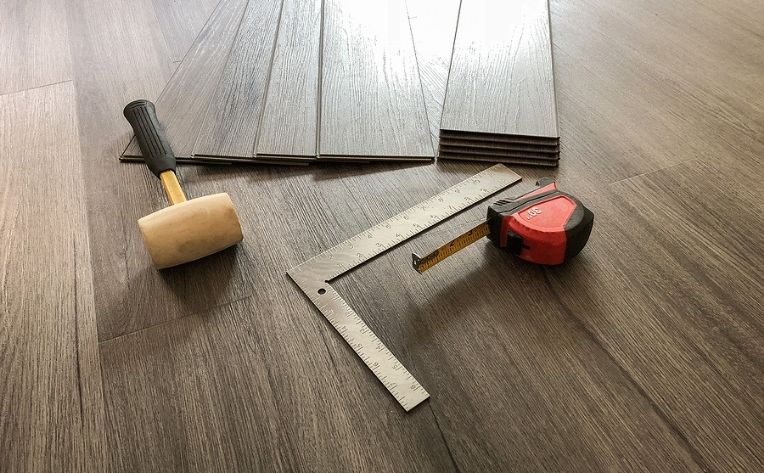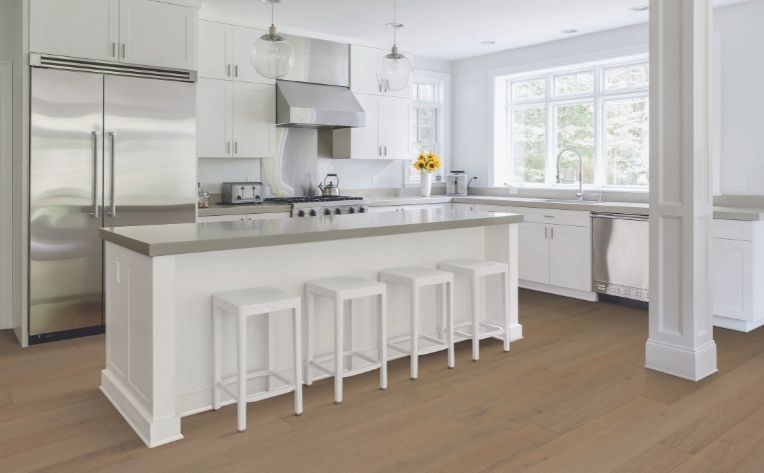
For every area of your new home, there are new types of flooring to consider. While some rooms can thrive with just about any floor, other areas like bathrooms and mudrooms need more consideration.
Tile
Tile is the most obvious choice for kitchens and bathrooms, as it is naturally waterproof and fairly indestructible. Some tile trends include realistic stone or wood looks. New homes tend to include timeless looks like marble, limestone, or slate. If you’re looking for a more contemporary aesthetic, concrete-look tiles are a solid choice, no pun intended. Depending on your climate, you might know the struggle of walking on an ice-cold bathroom tile after a hot shower. If this is a problem for you, consider adding a heating system underneath your tiles. For something less expensive (and less cold) than tile, look to vinyl or laminate flooring.
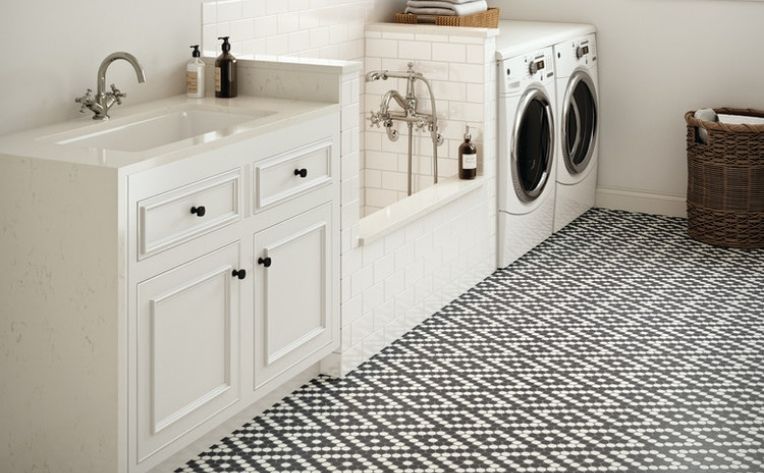
Vinyl vs. Laminate Flooring
There’s no question that when you’re building a new home, you want it to last a long time. You’re going to live there for the foreseeable future, and you want to increase your home resale value. One of the most resilient flooring options is vinyl flooring. Not only are vinyl floors waterproof, stain-proof, generally more affordable, and more comfortable underfoot, but they can mimic much more expensive material options, like marble and hardwood. There’s a reason vinyl flooring has seen a spark in popularity in recent years.
Laminate flooring is vinyl flooring’s doppelgänger. They’re comparable in average cost, lifespan, and stain resistance. They also look very similar, with laminate flooring slightly more closely mimicking hardwood, stone, and other materials. But that difference isn’t super noticeable unless you like to lay down on your floor. Which you might—in which case, you do you. Their key differences, however, lie in their water resistance, comfort and sound, and environmental impact.
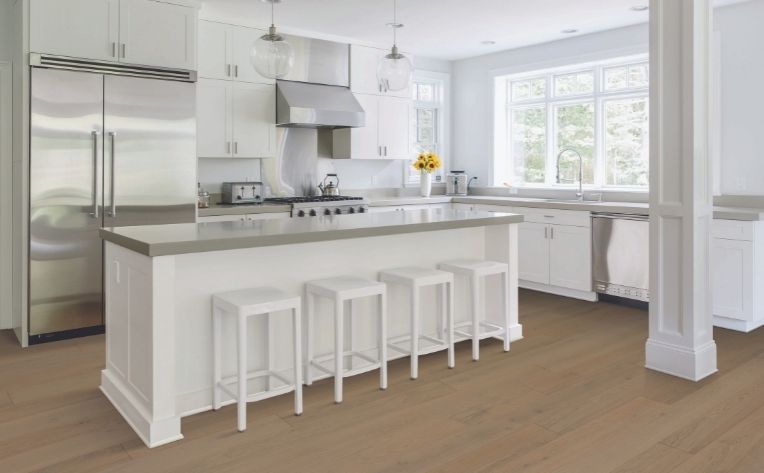
Vinyl flooring will work just about anywhere in your new home. It’s 100 percent waterproof, so it can withstand the moisture levels in bathrooms, kitchens, damp basements, and mudrooms. Laminate flooring is a not waterproof. Instead, it has a core layer of wood, topped with a hard, clear plastic layer that covers the design layer. When moisture gets into laminate flooring, the wooden core can get waterlogged and cause those layers to peel away from each other.
In terms of comfort and sound, laminate flooring is the winner. Laminate flooring is naturally more comfortable to walk on because, with its 12 mm-thick planks, it is thicker than vinyl flooring, which ranges from 1.5 mm to 5 mm in thickness. When you add foam or felt underlayment to laminate flooring, it becomes even quieter, softer, and more comfortable to walk on.
Both vinyl and laminate flooring contain plastic or synthetic materials, but depending on the laminate flooring brand, your laminate product could include recycled wood in the core layer. If environmental impact is important to you, natural flooring materials like cork, bamboo, linoleum and certain carpet products are greener.
Eco-Friendly Trends
The eco-friendly flooring market is booming, with popular options like cork, bamboo, linoleum, and certain types of carpets. There’s a reason cork has been used for stoppers in wine bottles for hundreds of years. Cork is harvested from the bark of cork oak trees, meaning the trees do not need to be cut down, making it a very renewable resource. Like wood, cork can be finished with various paints and stains to fit in any area of your home. Bamboo is quickly gaining popularity because of its durability and easy maintenance and installation. Bamboo is considered more sustainable than hardwood because a fully grown bamboo tree only takes three to five years to grow –a much faster time frame than a full-grown oak tree. Like cork, it is available in a wide range of colors so you can achieve any new style you’re looking for.
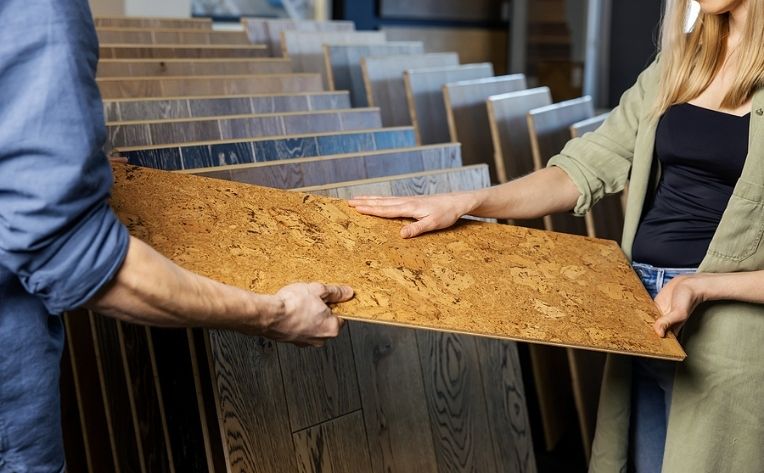
Linoleum flooring has the same durable, water-resistant qualities as vinyl flooring, except it’s made from natural materials like linseed oil, cork dust, tree resins, wood flour, and ground limestone. It was popular in homes before vinyl flooring was introduced in the 1940s, but it is now making a comeback because of its environmental benefits.
Carpet sales have been booming lately, making up 60% of retail flooring sales last year. Sustainable carpeting options like PET polyester carpets are made of recycled plastic bottles and are durable, stain-resistant, and come in a range of colors and patterns. The recycled material isn’t the most comfortable to walk on with bare feet, though, so consider putting it in an area of your home where you’re not typically barefoot.
Need Help Installing Floors in Your Home? Ask the Experts at Factory Flooring
What type of underlayment should you use? How many inches thick? How do you install it? And how do you avoid damaging your floors in the process?
When you work with Factory Flooring, you don’t have to worry about these questions. Our team of professional flooring installers will handle all the heavy lifting for you — literally. All you have to do is relax and enjoy the savings on your energy bill.
Need to get more flooring ideas first? Our design blog has dozens of articles to help you get started. Whenever you’re ready to tackle your insulation project, we’ll be here to help. Contact us online to get started, or call Factory Flooring at 469-583-7053
